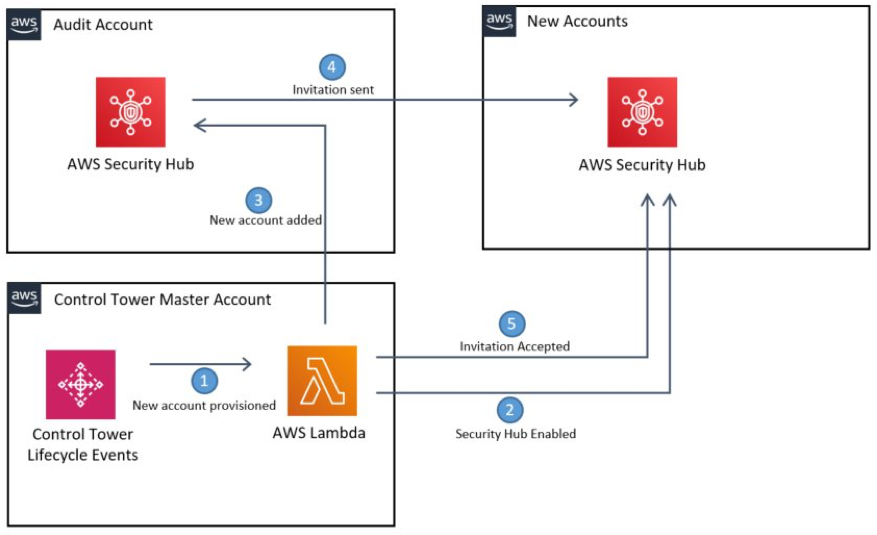AWS Cloud Operations & Migrations Blog
Category: AWS CloudFormation
How to enable Amazon CloudWatch Alarms to send repeated notifications
Amazon CloudWatch Alarms is natively integrated with Amazon CloudWatch metrics. Many AWS services send metrics to CloudWatch, and AWS also offers many approaches that let you emit your applications’ metrics as custom metrics. CloudWatch Alarms let you monitor the metrics changes when crossing a static threshold or falling out of an anomaly detection band. Furthermore, […]
Use Amazon Cloud Watch math expressions and composite alarms for detailed monitoring of AWS Elastic Load Balancers
AWS Elastic Load Balancing encompasses the following load balancers in AWS: Application Load Balancers, Network Load Balancers, Gateway Load Balancers, and Classic Load Balancers. The load balancer serves as a single contact point for clients and it distributes incoming traffic across multiple targets such as EC2 instances as well as it is crucial to monitor […]
Visualize Amazon EC2 based VPN metrics with Amazon CloudWatch Logs
Organizations have many options for connecting to on-premises networks or third parties, including AWS Site-to-Site VPN. However, some organizations still need to use an Amazon Elastic Compute Cloud (Amazon EC2) instance running VPN software, such as strongSwan. Gaining insight into Amazon EC2-based VPN metrics can be challenging when compared to AWS native VPN services that […]
Automating AWS Security Hub Alerts with AWS Control Tower lifecycle events
Important Update: As of 23 Nov 2020 the Security Hub service was updated to support direct integration with AWS Organizations. Lifecycle events are no longer the recommended way to enable Security Hub. Please utilize Security Hub’s native integration with AWS Organizations. You can also refer to this blog, which walks through how to enable GuardDuty […]
Control developer account costs with AWS CloudFormation and AWS Budgets
Often when working with customers, we guide them by using AWS Budgets and related tools in the AWS platform in order to create cost and utilization guardrails. These tools can be used to conduct advanced, automated, and hands-free actions within your AWS environment – even across multiple accounts. This post will walk you through a […]
Automating account provisioning with CloudCheckr integration for Cloud Financial Management
AWS Organizations helps you centrally manage and govern your environment as you grow and scale your AWS resources. AWS Organizations lets you programmatically create new AWS accounts to allocate resources, group accounts to organize your workflows, apply policies to accounts or groups for governance, and simplify billing by utilizing a single payment method for every […]
Policy-as-Code for Securing AWS and Third-Party Resource Types
This post was written by Scott Alexander and Kevin Formsma from Mphasis Stelligent. Every day, more developers are having lightbulb moments as they realize they can design and manage their infrastructure. It’s our responsibility, as practitioners of the DevOps mindset, to build systems that allow developers to move quickly and speed up the feedback loop […]
Building a cloud CMDB on AWS for consistent resource configuration in hybrid environments
In this post, we will show you how you can design and implement a configuration management database (CMDB) strategy as part of your cloud operating model. We are going to review some common needs when building a CMDB and the relevant AWS services that will help you build a comprehensive solution. We will talk about […]
SNMP monitoring using Amazon CloudWatch and Elastic Logstash
Customers want a single pane of glass for their systems operations where they can visualize the health and performance of applications running in several AWS Regions and in their on-premises environment. Simple Network Management Protocol (SNMP) is an internet standard protocol for collecting and organizing information about managed devices on IP networks and for modifying […]
Accelerate application development with AWS CloudFormation by preventing stack rollback
AWS CloudFormation helps minimize downtime when you are deploying application and infrastructure resources. By default, it supports a deployment safety approach (that is, one in which it rolls back to the last known good state whenever an error is encountered during the deployment of stack resources). This works well for production systems, but might not […]









